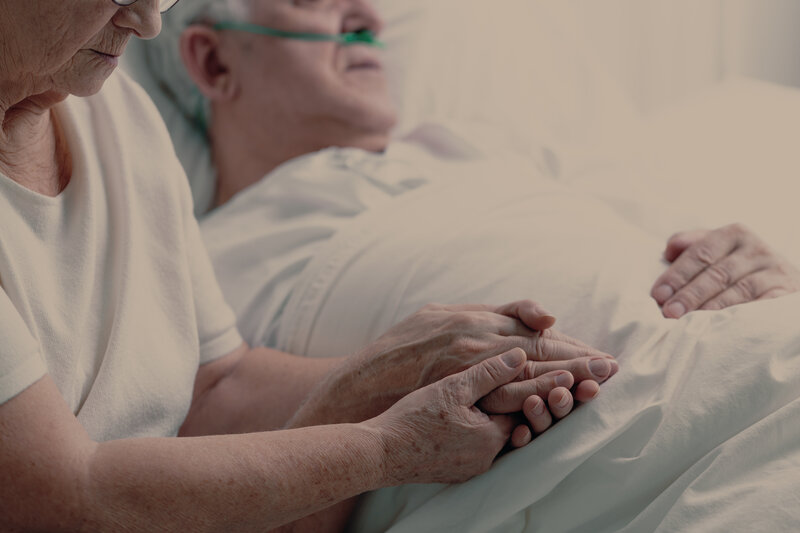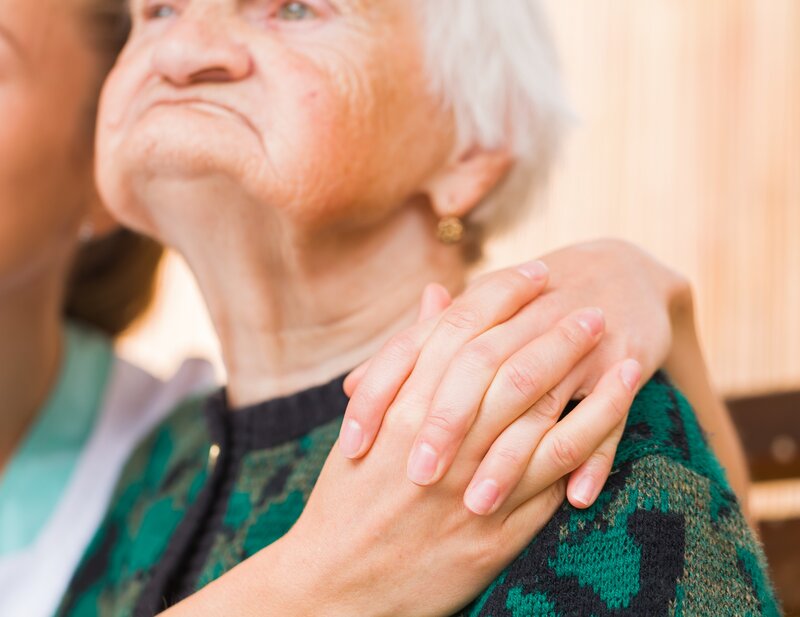
Last month we highlighted all the ways hospice volunteers bring joy, ease, and enhanced quality of remaining life to our hospice clients. However, humans aren’t the only ones who bring warmth and cheer into our client’s households. Our four- (and sometimes three-) legged pet volunteers leave warmer hearts and broad smiles wherever they visit.
Pets play a huge role in the palliative and home care worlds, and we utilize our animal volunteers in a range of settings – from nursing homes and hospitals to people’s homes and our own hospice house.
The Sweet Connection Between Volunteer Pets & Hospice Clients
Animal-assisted therapy (AAT) is the “official” term for the service provided by hospice volunteer pets, and it comes in many forms. Some therapy animals spend their lifetimes by their companion’s side, serving as their eyes or ears. In the hospice realm, AAT comes in the form of companionship and comfort care.
5 Ways Pets In Hospice Care Support Patients
While the majority of our pet volunteers are dogs, we have access to a range of certified AAT animals so no allergy goes un-met.
In addition to dogs, we have access to:
- Cats
- Birds
- Pigs
- Rabbits
- Horses (usually miniature!)
These pets play an especially important role for our hospice clients.
Relieve fear and anxiety
When people are asked what they fear most about dying, one of the top answers is “Pain.” However, we frequently notice that after the pain is relieved, some patients still experience quite a bit of mental anguish, fear of what it means to die, and anxiety about what will happen to their loved ones after they’re gone.
There are no medications for that type of “existential” fear. All we can do is listen, facilitated inquiry, and do what we can to relieve that generalized anxiety. Pets have a knack for meeting our clients right where they’re at any given moment. The simple act of being near a pet, petting them, talking to them, crying as they stay unconditionally close by, and feeling a connection helps lowers blood pressure and anxiety levels.
Pets in hospice care can soothe the grief of former pets (or human loved ones)
Many of our clients had pets throughout their lifetime and grieve their passing. For some, their last pet was their “last pet” because they felt too worn out or incapable of providing a full-time life for a new pet. Others have had to give their pets to family members or friends when they transferred out of their homes and into assisted living, nursing homes, or hospice houses.
Then there is the general grief experienced by the death of spouses, life partners, peers, or other loved ones. The warm, loving presence of a pet helps to soothe that ache.
The joy of non-clinical contact
Now, as compassionate hospice care providers, we try to keep the clinical out of our client connections as much as we can. Our mission centers around heart-full care – full of kindness, tenderness, and unconditional support – just like our volunteers (both animal and human).
However, something must be said about warm, heart-to-heart contact that has nothing to do with clinical care or diagnosis. Our hospice clients simply enjoy the quiet, caring presence shared between two loving beings.
Extra bursts of “feel good” hormones
Scientific studies show that when humans connect with pets, they experience the same elevation of “feel good” hormones – like serotonin, endorphins, oxytocin, and dopamine. According to Harvard University, these hormones not only feel good, they also benefit you physically and emotionally.
In addition to helping you feel more positive, connected, and filled with “warm fuzzy feelings,” these hormones are also proven to:
- Make people feel more calm and relaxed
- Relieve pain and physical discomfort
- Boost feelings of happiness or pleasure
- Encourage people to be more socially engaged and connected
While some of our hospice clients are surrounded by friends, families, and their own pets at home, others are living alone, far away from family, or are bedbound in a facility-style room. The role of pets in hospice care becomes invaluable, and our clients look so forward to when our pets and their human volunteer companions are scheduled for a date.
Reduce loneliness (and facilitate better communication)
It makes sense that pets in hospice care reduce loneliness for the clients who express interest in having a visit from a hospice dog. Some of our clients are introverts and not very talkative, but they are often comfortable speaking to volunteer pets. Others are very stoic or “hate to be a bother,” and so they won’t always open up about things they worry about or wish they had access to.
Our care team has learned to pay attention to these conversations when they aren’t too personal as we often learn more about what our patient needs, wants, or would appreciate by what they share with their volunteer pet companion.
Benefit From A Hospice Pet Volunteer Through Hospice Of The Golden Isles
Would you or a loved one benefit from visits with a hospice volunteer pet? Do you have a certified therapy animal who would like to volunteer for us?
Get in touch with Hospice of the Golden Isles, and we’ll connect you with the right people – or animals. In our experience, animals overwhelmingly display an innate sense of what our clients need, and we’ve watched miracles occur right before our eyes. We’d love to help you do the same.








